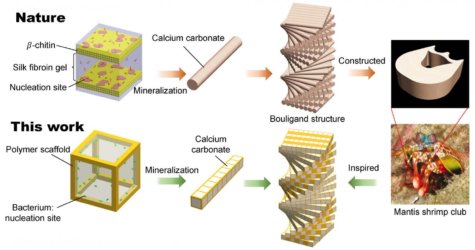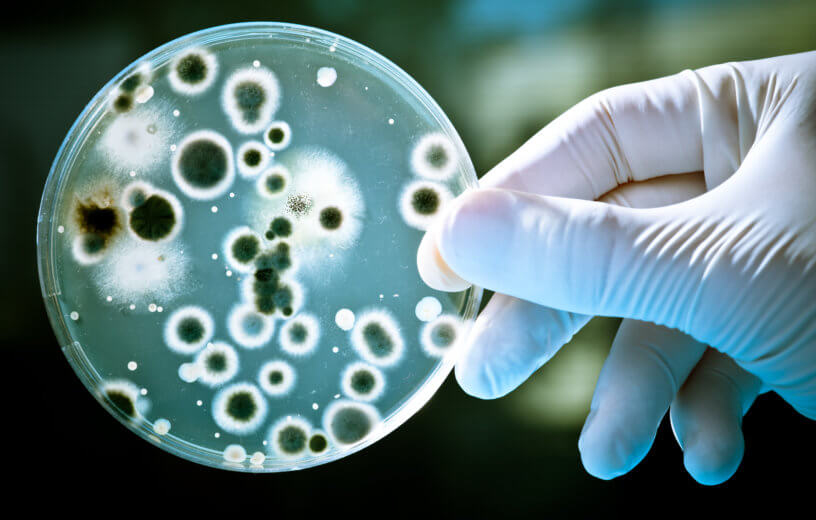LOS ANGELES, Calif. — Synthetic materials such as carbon fiber and Kevlar have been a revolutionary step forward in manufacturing. Not only do they make stronger cars, airplanes, and protective equipment, these products are significantly lighter as well. Now, researchers are turning to material in nature, such as spider silk and fungi, to create the next generation of super-strong materials.
A team from the University of Southern California (USC) say they’ve engineered bacteria to produce a composite material stronger than any existing synthetic products. The key to its strength is in its shape.
Bouligand structures: nature’s strongest shape
One of the strongest structures occurring in nature is the Bouligand structure. This “twist” shape is made by arranging multiple layers of material at various angles. One of the most well-known examples of this structure in nature is the dactyl club of the mantis shrimp. The creature uses it to smash mollusk and crab shells.
Most revolutionary engineering feats take inspiration from natural structures, but the Bouligand structure is difficult to make synthetically. Qiming Wang and his USC colleagues decided to try to coax a species of bacteria called S. pasteurii to secrete calcium composite into a Bouligand structure shape.
“Bacteria know how to save time and energy to do things. They have their own intelligence, and we can harness their smartness to design hybrid materials that are superior to fully synthetic options,” says Wang in a university release. “Now we take an important step forward: We use living bacteria as a tool to directly grow amazing structures that cannot be made on our own.”
Self-repairing, living building materials?

The researchers chose S. pasteurii because it naturally secretes an enzyme called urease. When this enzyme is exposed to urea and calcium ions, it produces calcium carbonate, a very strong mineral found in bones and teeth. Since scientists can’t tell bacteria to spit out enzymes in a twist shape, researchers had to help the bacteria along. They 3D-printed a scaffold for the bacteria. When they added the bacteria to the scaffold, it wasn’t long until they had a Bouligand structure made of calcium carbonate.
The researchers immediately put their material through mechanical stress tests. They discovered their material exhibited the triple crown of structural integrity: superior strength, fracture resistance, and energy resistance. No existing material has a combination of all three elements that work as well as they do in the researchers’ bacteria-produced structure.
The new structure also has another advantage — since it’s created by living creatures, it may be able to “self-repair,” eliminating the need to completely replace damaged materials.
“An interesting vision is that these living materials still possess self-growing properties,” Wang concludes. “When there is damage to these materials, we can introduce bacteria to grow the materials back. For example, if we use them in a bridge, we can repair damages when needed.”
These findings appear in the journal Advanced Materials.
